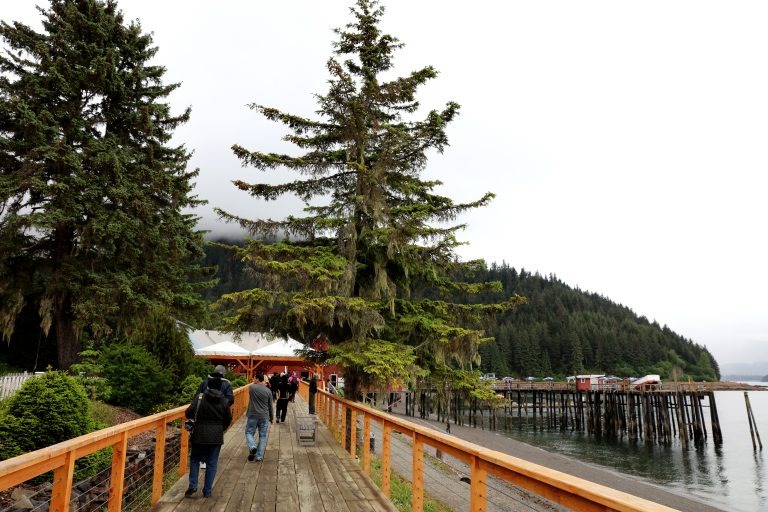Alaska’s Icy Strait Point offers tourists unparalleled access to adventure, wilderness and wildlife. But what really sets this Native Alaskan-owned business apart is the opportunity it affords visitors to experience the tribe’s cultural and culinary traditions—a window into contemporary Tlingit life.
Located about 35 miles west of Juneau, Icy Strait was once the Hoonah Packing Company, a salmon cannery, which in 1996 was converted into a museum, restaurant and shops that today provide Huna Tlingit tribal members with economic opportunities including employment, preference for local hire and entrepreneurship options. Icy Strait Point has been so successful that it’s received a Travel & Leisure Global Vision Award for Community Building, a Conde Nast Traveler World Savers Award and a Best Tribal Destinations and Tourism Leaders Award from the American Indian Alaska Native Tourism Association (AIANTA).
This cultural heritage tourism success story is a prime example of how tourism can drive economic development while offering visitors an authentic experience, which is why Icy Strait Point is featured in the George Washington University’s (GW) certificate program in cultural heritage tourism curriculum. For the past year, GW’s International Institute of Tourism Studies (IITS) in partnership with AIANTA has been offering the six-week professional development program to individuals working with tribal tourism in some capacity. In November, 2017 48 people from tribal governments and businesses completed the program and received their professional certificates.
“Cultural heritage tourism provides indigenous communities with a way to increase their livelihoods while preserving their native traditions,” explains IITS Executive Director Seleni Matus. “At the same time, we’re seeing an increase in the number of tourists who value a travel experience that is authentic and puts them into close contact with people from other cultural backgrounds. In other words, cultural heritage tourism provides wonderful alternatives for both visitors and host communities. It’s a win-win.”
AIANTA’s Executive Director Camille Ferguson notes that, “Providing educational opportunities like the cultural heritage tourism certificate program helps tribes and communities to establish themselves as tribal tourism leaders.”
The program draws members of tribes from around the country. For example, the State of Montana has enrolled six participants. According to Philip Belangie, Program Manager from Montana’s Office of Tourism and Business Development, “that’s because the underlying foundation to our investment in cultural heritage tourism is the knowledge that the greatest asset tribes have is their culture.”
The joint GW International Institute of Tourism Studies and American Indian Native Alaska Tourism Association’s six-week Professional Certificate in Cultural Heritage Tourism program is designed to help participants:
- Develop an understanding of trends in cultural heritage and native tourism;
- Learn best options and approaches for managing tourism at the community level;
- An understanding of how to conduct a comprehensive tourism assessment and evaluate the potential of cultural heritage tourism for your community;
- The tools needed to introduce cultural heritage tourism to your community and to plan for its adoption and growth.
Please click here for more information and to register for the program.
GW and G Adventures Publish Guidelines on Cultural Heritage Tourism
Indigenous People and The Travel Industry: Global Good Practice Guidelines is a 23-page, open-source booklet for travel businesses working with indigenous communities. Its 17 guidelines, developed after thorough review of existing literature and primary surveys with communities and travelers, were finalized with input from an expert panel including the World Indigenous Tourism Alliance, Indigenous Tourism Association of Canada, U.S. Bureau of Indian Affairs, American Indian Alaska Native Tourism Association, Community Based Tourism Institute, and Sustainable Travel & Tourism Agenda. Click here to access the guide.
Photo by Enrico Blasutto (Own work) [CC BY-SA 4.0 (https://creativecommons.org/licenses/by-sa/4.0)], via Wikimedia Commons

